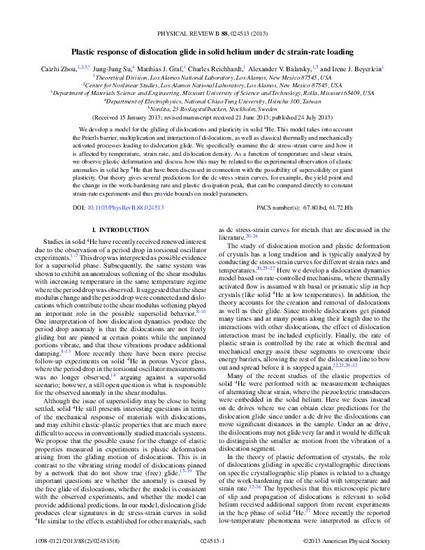
We develop a model for the gliding of dislocations and plasticity in solid 4He. This model takes into account the Peierls barrier, multiplication and interaction of dislocations, as well as classical thermally and mechanically activated processes leading to dislocation glide. We specifically examine the dc stress-strain curve and how it is affected by temperature, strain rate, and dislocation density. As a function of temperature and shear strain, we observe plastic deformation and discuss how this may be related to the experimental observation of elastic anomalies in solid hcp 4He that have been discussed in connection with the possibility of supersolidity or giant plasticity. Our theory gives several predictions for the dc stress strain curves, for example, the yield point and the change in the work-hardening rate and plastic dissipation peak, that can be compared directly to constant strain-rate experiments and thus provide bounds on model parameters.
Available at: http://works.bepress.com/caizhi-zhou/12/
